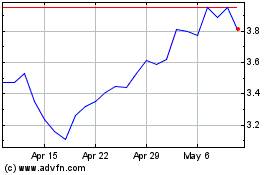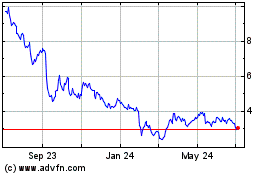Asian producers seek to leverage profitability and cost
advantages driven by declining oil price, but market volatility
promises wild ride for industry, IHS says
A team of experts from business information provider IHS (NYSE:
IHS) will present a global and regional view of the implications of
the oil price decline on the Asian and global chemical industry, at
a special IHS Chemical marketing seminar to be held on Thursday,
May 7, 2015, during the Asian Petrochemical Industry Conference at
the COEX Convention Center in Seoul.
Leading the seminar will be Dave Witte, senior vice
president-IHS and general manager-IHS Chemical. Witte will be
joined by Tony Potter, vice president-chemical insight for IHS
Chemical Asia Pacific; Paul Pang, vice president-chemical insight,
IHS Chemical China; Kurt Barrow, vice president-oil markets and
downstream at IHS Energy; Brian Jackson, senior economist-IHS
Economics and Country Risk; and Gao Tao, manager-light vehicle
production forecast, IHS Automotive China.
The IHS APIC Chemical Marketing Seminar agenda, on Thursday,
May 7, 2015, takes place at Room 104-105, Grand Ballroom, COEX
Convention Centre in Seoul:
9:00 a.m. Global Economic Outlook, Brian Jackson, senior
economist-IHS Global Insight, Economics & Country Risk
Recent trends in the global economy can best be described as
multiple divergences. These include diverging growth, diverging
impacts from lower commodity prices, diverging monetary policy
actions, and diverging trade performance. These divergences will
shape the speed and composition of global growth during the coming
years. In addition to the global outlook, emphasis will be placed
on China’s economic slowdown, stimulus and reform.
9:30 a.m. Energy: A Turning Point – the Industry Resets: Kurt
Barrow, vice president-Oil Markets & Downstream, IHS
Energy
The rapid decline of global oil prices—followed by OPEC’s
decision to maintain its production, shifts the global pendulum of
oil supply and demand to the American crude oil market—creating a
complicated scenario for chemical producers dependent on
crude-based feedstocks. North American tight oil will become the
(inadvertent) swing supplier, but despite a sharp decline in drill
rigs, U.S. production continues to rise. The price of oil will
determine when production growth will slow and when demand growth
will rise to help solve the imbalance.
9:55 a.m. State of the Industry, Dave Witte, senior vice
president-IHS and general manager-IHS Chemical
Industry continues to be buffeted by unpredictability and
volatility in regulatory, economic and energy dynamics. Rapid oil
price declines in the face of weak demand and rapidly rising shale
supply have driven a dramatic reversal in oil and chemical
pricing. Meanwhile, chemical demand has remained tepid and the
drop in oil prices has not encouraged consumers to keep or build
inventory. The resultant lowering and flattening of the supply
curve, combined with the relative strengthening of the U.S. dollar,
has changed the competitive landscape and redistributed profits,
both geographically and throughout the value chain. While the
near-term outlook for chemical demand remains subdued, cheaper oil
is sowing the seeds of higher demand and higher utilizations. The
outlook and impact clearly varies by region and value chain, with
some specialty sectors now benefitting from the lower pricing
likely to see a reversal, and others simply so oversupplied that
additional demand will not matter. This presentation will
examine the outlook for the industry and quantify the potential
impact on industry profits and margins as the industry transitions
from high oil prices to low oil prices and back again.
10:40 a.m. Asia Petrochemical Industry Outlook, Tony
Potter, vice president-Chemical Insight, IHS Chemical Asia
Pacific
Asia is the epicenter of chemical demand growth and this
presentation will examine the demand drivers as well as the
headwinds to continued growth. Investments in North America and the
Middle East based on low-cost feedstocks dominate the headlines,
but Asia will build more new capacity than these regions combined.
Lower oil prices have made naphtha-based complexes in Asia more
competitive relative to gas- or coal-based complexes. This
discussion will assess the competitive position of Asia and the
evolution of petrochemical and polymer trade. Potter will offer an
overview of investments in the main value chains and provide
perspective on the next capital cycle in Asia. He will also discuss
the prospects for investments outside of China and India.
11:00 a.m. China Chemical Industry Update – Latest
Developments and the Impact of Low Oil, Paul Pang, vice
president-Chemical Insight, IHS Chemical China
China is highly diversified in demography, economic development
and chemical demand, with the majority of the country’s chemical
demand concentrated in the east and south. Much of the country’s
chemical industry was developed in the past 20 years, with the
biggest changes being the emergence of unconventional chemicals,
including coal chemicals and propane dehydrogenation. Prior to coal
chemicals, most of China’s petrochemical production facilities were
located in the coastal regions, near demand centers. In contrast,
nearly all coal chemical projects are located in the north and west
regions, where abundant, stranded coal resources exist. Following a
wave of coal chemical project developments, a new production base
is moving westward. The recent oil price decline is generally good
news for the Chinese chemical industry. The majority of
petrochemical producers and all consumers benefit from the low oil
price, and margins for integrated refining and petrochemical
producers have improved even though chemical product prices fell.
Low oil prices, however, are bad news for the newly emerged
unconventional chemical producers.
11:20 a.m. Automotive Industry Developments, Gao Tao,
manager-Light Vehicle Production Forecast, IHS Automotive
China
The massive, 20-year rise in international trade and
globalization is slowing, and the world’s economy is once again
looking to America, not Brazil, Russia, India or China, to provide
the engine for economic growth. China is still the world’s largest
automobile market, but its economy is slowing markedly. In
addition, the United States’ recent investments in new crude oil
extraction technologies, and OPEC’s decision not to reduce
production, has had a massive impact on oil markets and the
commodity’s key players. The resulting increases in oil supply—the
life-blood of the global economy—is transforming the world’s
geopolitics. Resulting lower fuel costs will have significant
implications for auto consumers and the products they buy for years
to come, and chemical producers must prepare their strategies now
to meet market growth demands from the emerging auto market.
About IHS
(www.ihs.com)
IHS (NYSE: IHS) is the leading source of insight, analytics and
expertise in critical areas that shape today’s business landscape.
Businesses and governments in more than 150 countries around the
globe rely on the comprehensive content, expert independent
analysis and flexible delivery methods of IHS to make high-impact
decisions and develop strategies with speed and confidence. IHS has
been in business since 1959 and became a publicly traded company on
the New York Stock Exchange in 2005. Headquartered in Englewood,
Colorado, USA, IHS is committed to sustainable, profitable growth
and employs about 8,800 people in 32 countries around the
world.
IHS is a registered trademark of IHS Inc. All other company and
product names may be trademarks of their respective owners. © 2015
IHS Inc. All rights reserved.
IHS Inc.Danny Cheung, +65 6439
6192Danny.Cheung@ihs.comorPress Team, +1
303-305-8021press@ihs.com
IHS (NYSE:IHS)
Historical Stock Chart
From Mar 2024 to Apr 2024

IHS (NYSE:IHS)
Historical Stock Chart
From Apr 2023 to Apr 2024
